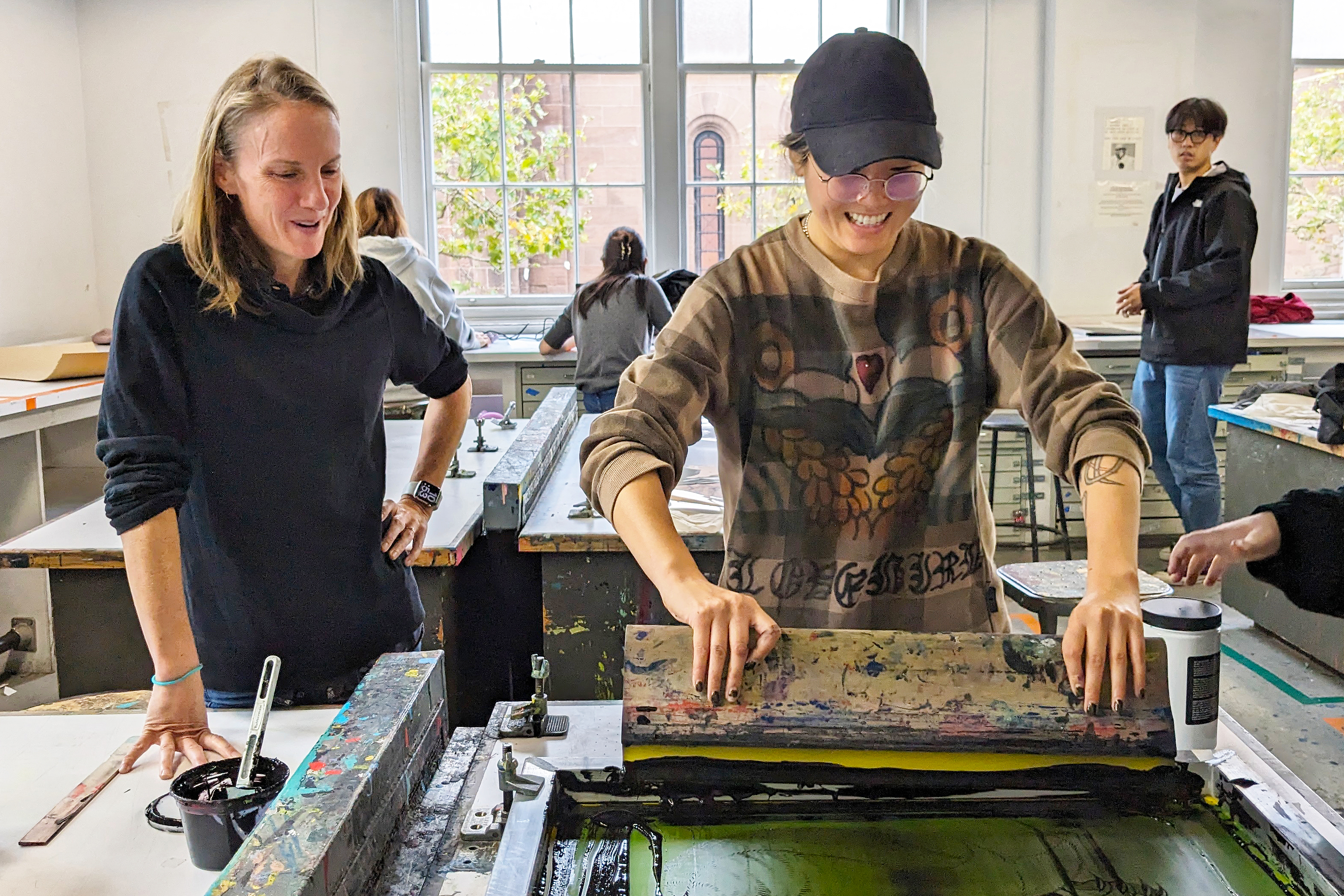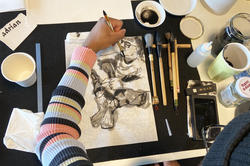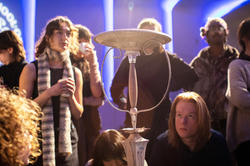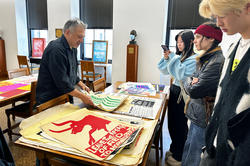Daniel Heyman’s new Wintersession global studies course introduces students to contemporary artists using ancient techniques in the Netherlands and Germany.
Students Push the Boundaries of Traditional Printmaking in Lively RISD Studio

According to art historian Claire Bishop, “there is a fine line between an installation of art and installation art. Installation art differs from traditional media in that it addresses the viewer directly as a literal presence in the space.” Students in a Printmaking class taught by Associate Professor Megan Foster 00 PR are considering Bishop’s reasoning as they explore printmaking techniques and use them to create conceptual installations.
As Foster explains, the course explores permanent, temporary and site-specific, installation-based art and is structured around prompts encouraging students to challenge the boundaries of traditional printmaking.
On a sunny fall morning, Foster moves from bench to bench in one of the department’s Benson Hall studios, offering each student advice about how to approach their first assignment: Multiples. “The current prompt is to make 50 prints of anything and creatively assemble them into an installation,” she explains.


The iterative nature of the assignment pushes the students to quickly pick up fundamental printmaking techniques like silkscreening, multicolor printing and even mixing ink. “My charge as their instructor is to equip students with new tools and new ways of making,” Foster says.
Junior Raheem Ashley-Bangoura 25 PH uses Photoshop to manipulate an image he is working on that combines an abstract photo of himself with a sketch. Across the room, grad student Tori Hong MFA 25 IL pulls print after print of an illustrated fox, which she’ll use to create an installation called Fox Den.
“I am creating a myth merging my family history and the extinction of Korean foxes,” Hong explains. “In 2014 they released 10 foxes into the wild in South Korea. One of them traveled 120 miles north through the demilitarized zone into North Korea, the reverse immigration route of my grandparents, who moved from North Korea to South Korea. The message of the piece is screw borders, screw war!”
One week later, the class gathers for an interim critique. They begin in the same studio, where Yiyi Wang MFA 25 PR has installed a repeating image of gigantic blue drops of water against a transparent background on two of the studio’s windows (see top photo). Several viewers see the droplets as childlike and are reminded of a graphic you might see on the shower curtain in a kids’ bathroom. “I see them as surrealistic,” Foster says before encouraging Wang to go further in that direction, advising her to “push the oddness rather than trying to make the image more realistic.”

“My charge as their instructor is to equip students with new tools and new ways of making.”
Next, the group focuses on an installation by senior Ping Fan 24 PR inspired by a romantic relationship that ended painfully for the artist. “I tried printing on different fabrics using different colors, some warmer, some stronger, some that are fading away like the memories,” says Fan. Junior Cam Calegari 25 PR appreciates the concept and encourages her to wash the image out even more by adding water to the ink.
Fellow junior Siya Kumar 25 PT is next in line for constructive criticism. She opens her jacket to reveal her installation, a gauzy skirt and top that she is wearing. “I love the sheerness of it,” exclaims Simone Nemes MFA 24 IL. “You could totally sell this outfit!”
The skirt incorporates multiple prints of an abstracted flower, and the top bears one larger image. Kumar has also printed a shopping bag and sheet of tissue paper, presenting the installation as a commercial product. “I was thinking about the interplay between negative and positive space when I created the piece,” she says. “I’ve been exploring Buddhist philosophy and meditation and did a silent retreat this past summer. I’m seeing those ideas showing up in my work as well.”
Foster wonders if Kumar could turn the work into a kind of performance piece commenting on the commodification of a spiritual experience. “I’d love to see a photo of you wearing the outfit in the middle of nowhere,” she says, “or maybe with White Sands National Park as a backdrop.”
The piece might also work for the class’ next assignment, Readymade, in which students will be asked to print on muslin or canvas—anything other than paper. “We’ll be expanding on these concepts throughout the semester,” Foster says. “It’s always inspiring to see how students coming from different backgrounds and majors influence one another in the studio.”
Simone Solondz
October 18, 2023


